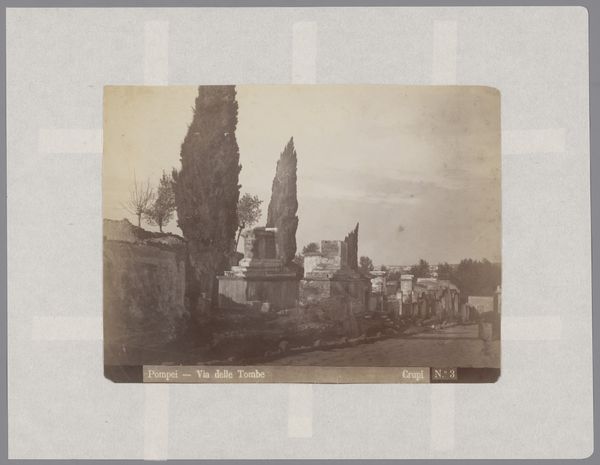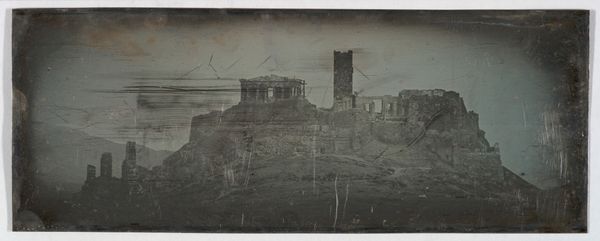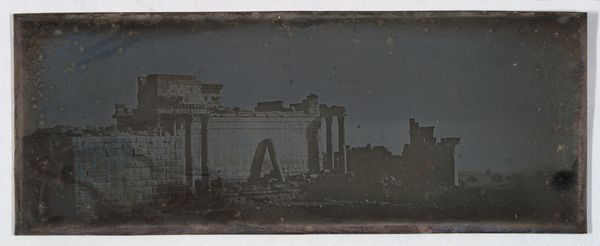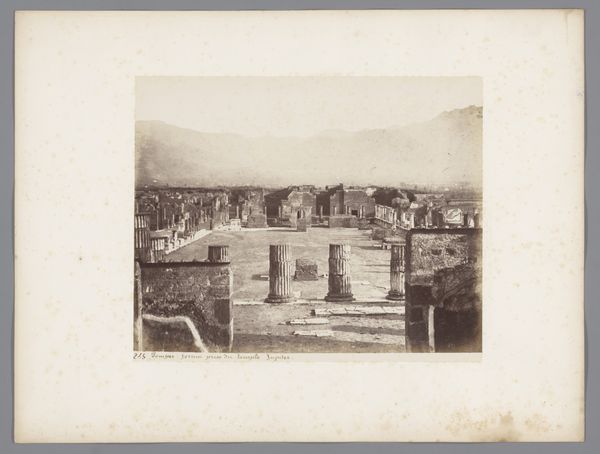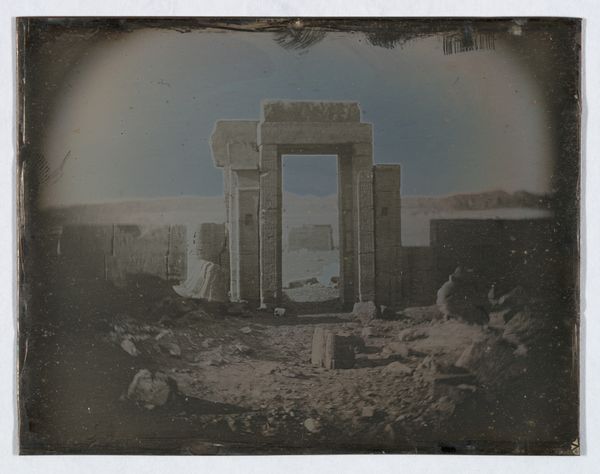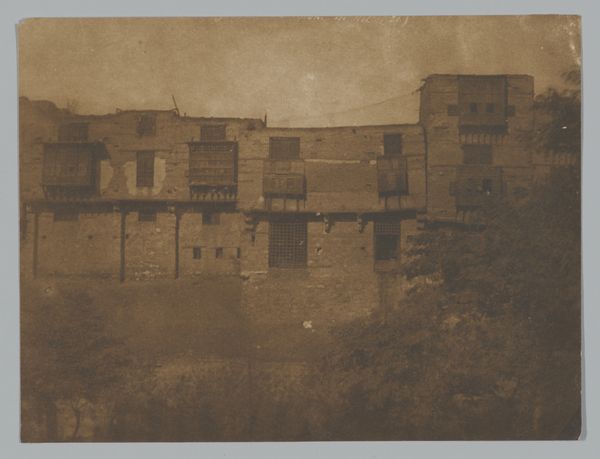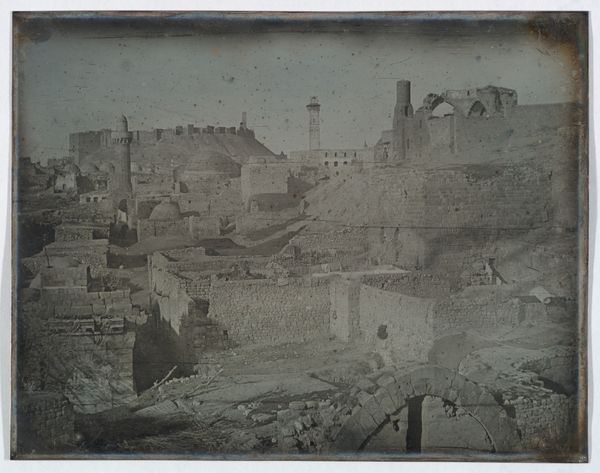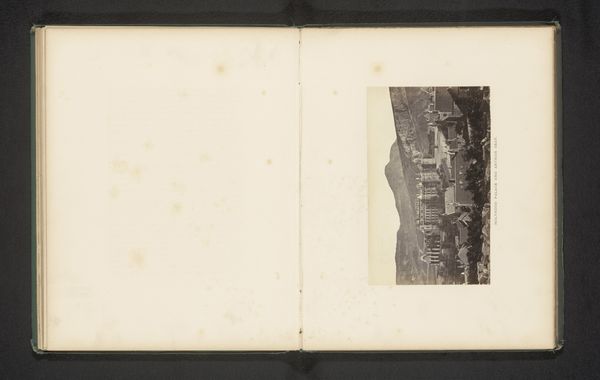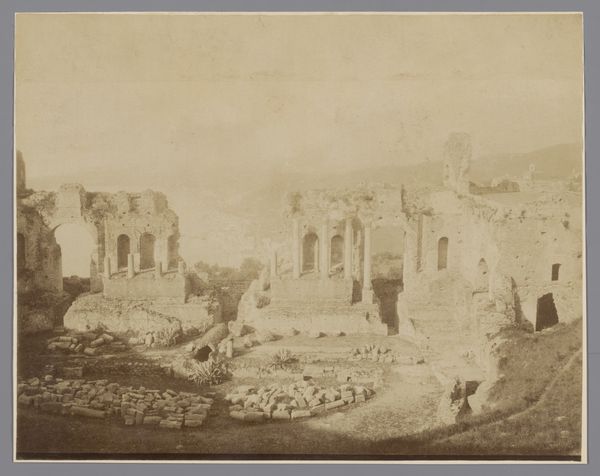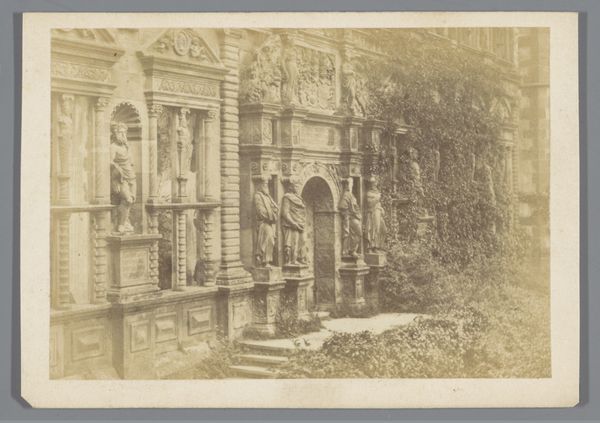
Temple and Date Palms, Philae (236. Philé T. découvert et P. dattiers) 1844
0:00
0:00
daguerreotype, photography, architecture
#
landscape
#
daguerreotype
#
ancient-egyptian-art
#
photography
#
ancient-mediterranean
#
architecture
Dimensions: Image: 3 1/8 × 3 3/4 in. (8 × 9.5 cm)
Copyright: Public Domain
Curator: This is "Temple and Date Palms, Philae," a daguerreotype created around 1844 by Joseph-Philibert Girault de Prangey. It's an early photographic glimpse of ancient Egypt. Editor: My immediate impression is one of melancholic grandeur. The tonality, the decay... it evokes a sense of faded power and lost civilizations. Curator: Indeed. Note how the photographer positions the temple ruins against the stark sky and dotted with the rhythm of the palm trees. The temple structure is really framed—structurally divided into distinct planes, almost mirroring an allegorical tableau. Editor: Palms in antiquity were understood to represent the sacred tree of life. Their inclusion here reinforces a notion of sustained vitality within what seems, at first glance, like only crumbling remnants. There's defiance in the green fronds set against the ruin, you see. Curator: A visual juxtaposition. But consider the horizontal orientation as an integral structure. This is also subtly divided by tones and by geometric structures formed through shadows. This contrasts greatly with the soft fronds and delicate structure of the palms in a most interesting dialogue. Editor: Symbolically, the contrast becomes even more pronounced. Palms represent victory, regeneration—ideas intrinsic to funerary rites throughout Egypt’s dynastic periods. So, death and rebirth. Curator: Yet look closely at how de Prangey harnesses light. Its diffusion gives the stonework almost a spectral weight. We’re seeing stone and light in concert to create depth and solidity that really plays upon what we know about photography's capacity to render objects in detail. Editor: The photograph becomes a palimpsest—the ruins suggesting mortality, overwritten with signs of survival. Each form is imbued with its significance, don’t you think? Curator: Ultimately, de Prangey allows the visual language of ruins and palms to speak as historical artifacts themselves—reproducing themselves ad infinitum through their photographic image. Editor: So we see this as a lasting dialogue through an iconic symbol of culture meeting an early effort to document that symbol. Curator: An articulation in visual and historical context, immortalized.
Comments
No comments
Be the first to comment and join the conversation on the ultimate creative platform.
